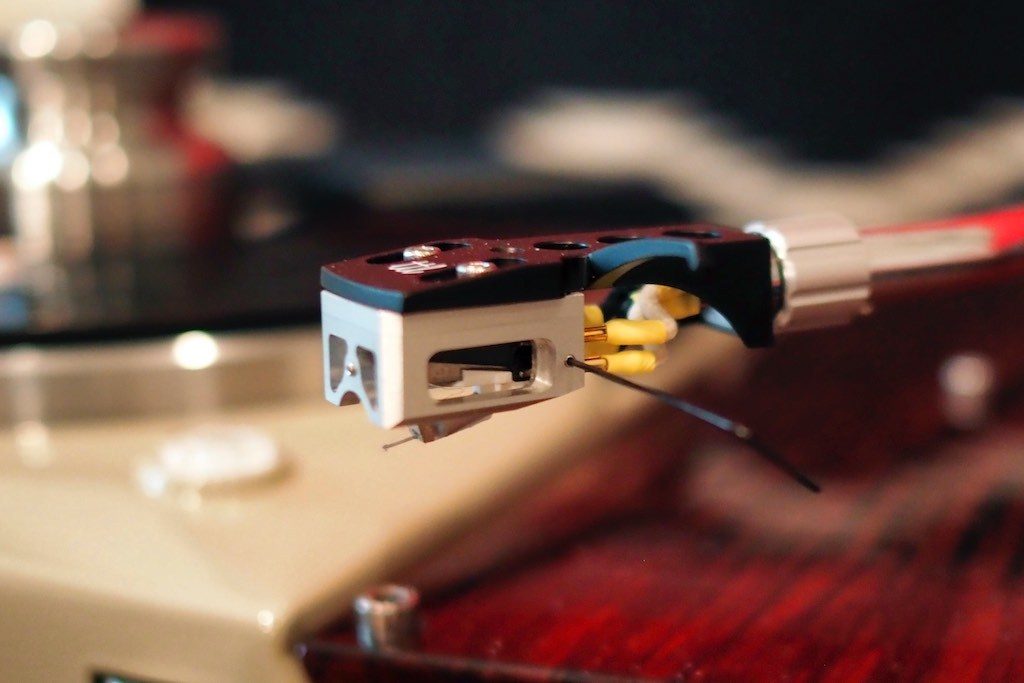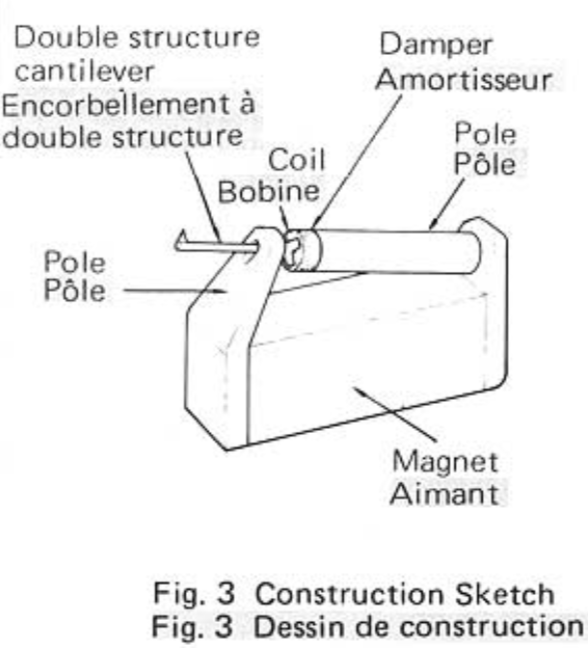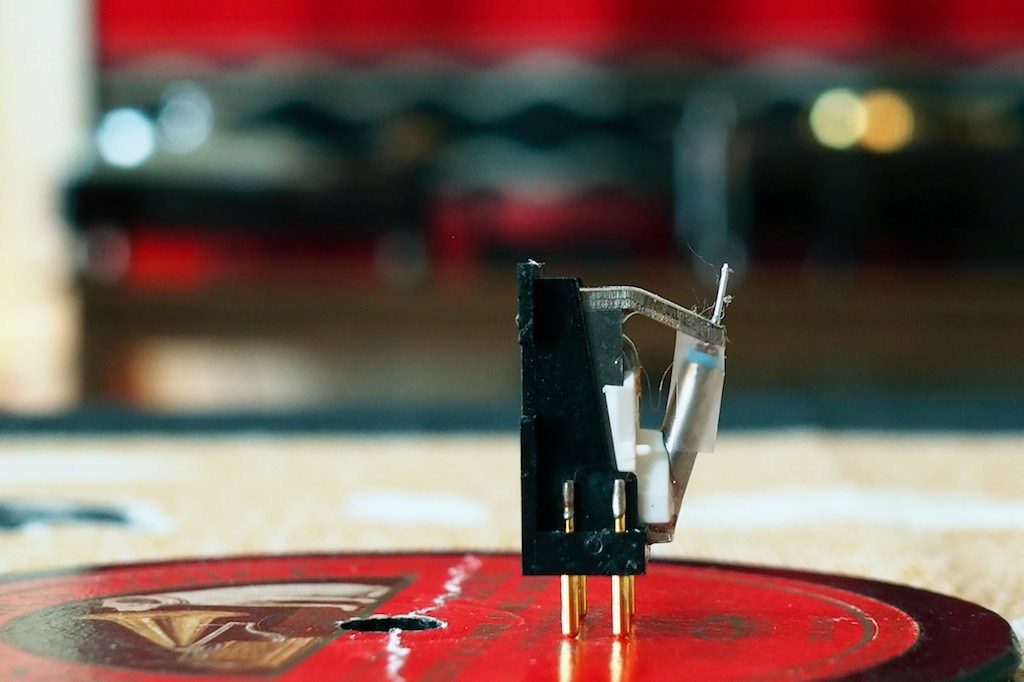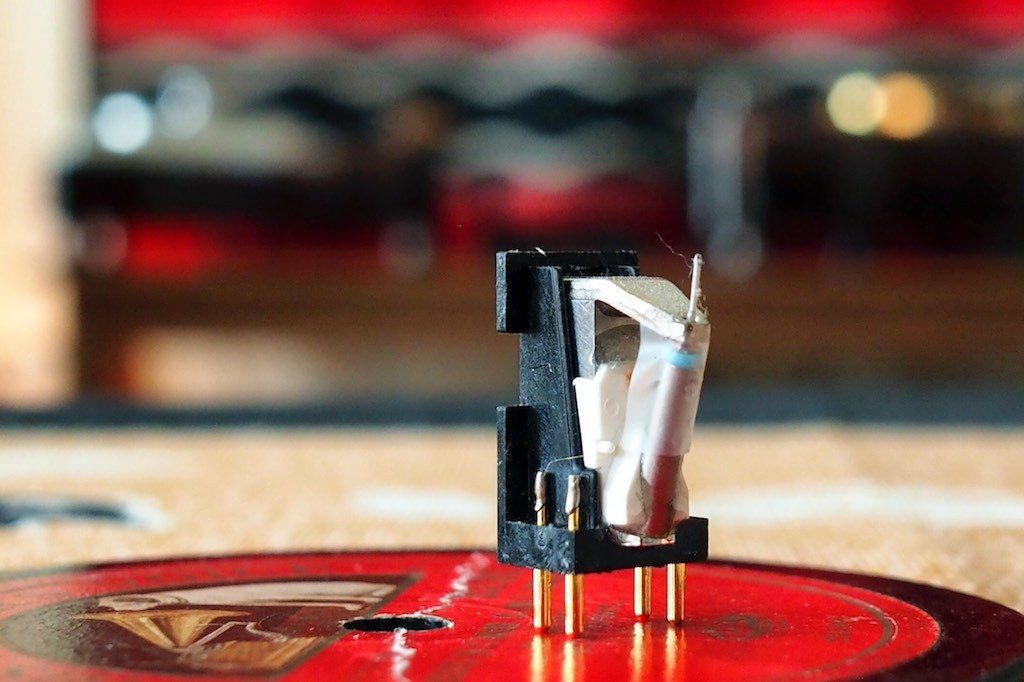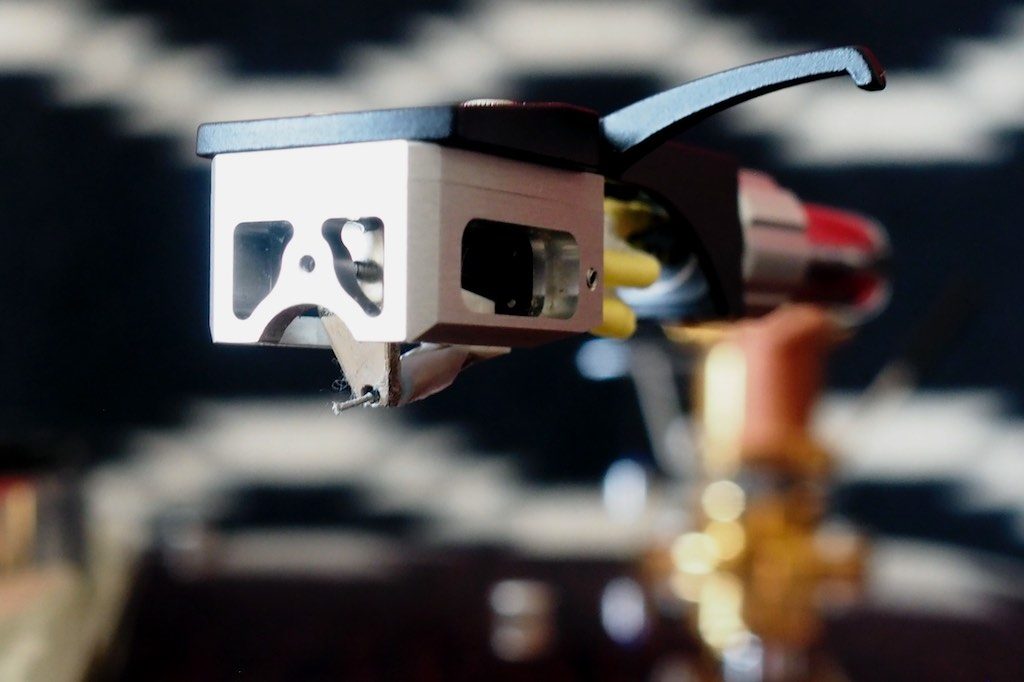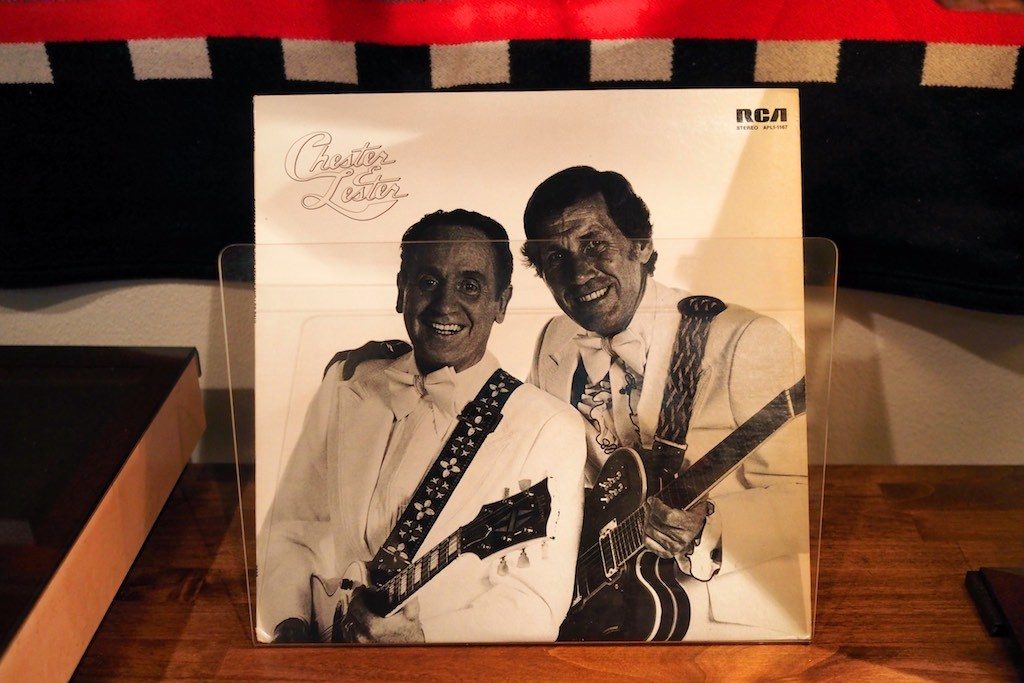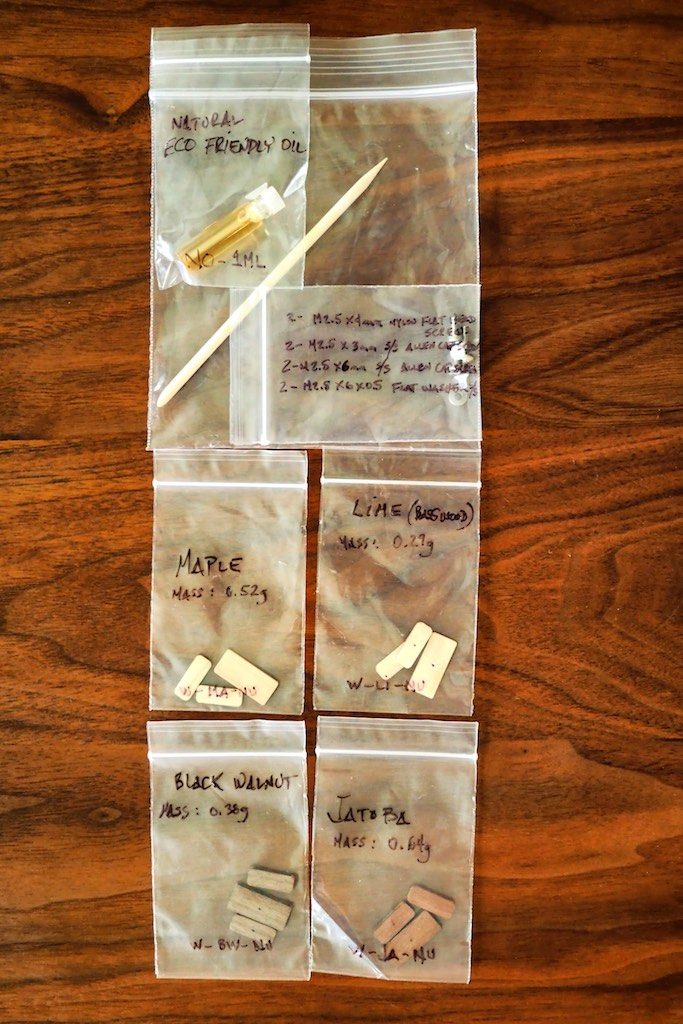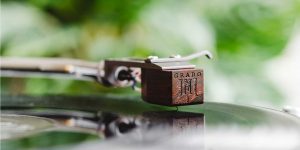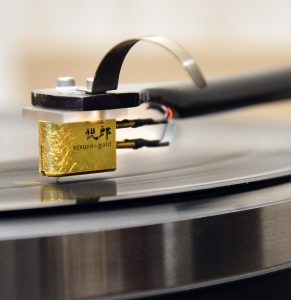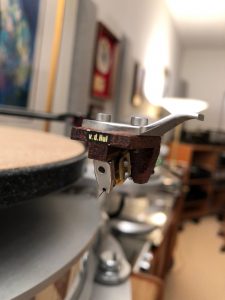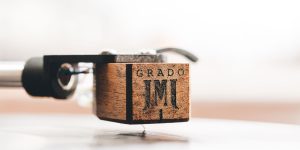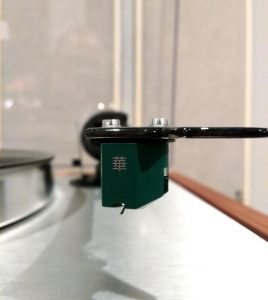Exploring the Tunability Features of the Audio MusiKraft Denon DL-103
Now that I've discussed my stock Denon DL-103's performance relative to the Audio MusiKraft Denon DL-103, let's explore the tunability features of the Audio MusiKraft cartridge shell and their effects on the Denon DL-103's performance.
The Audio MusiKraft Denon DL-103 cartridge shell has three primary tunability features.
One: There are two adjustable tuning screws on each side of the rear of the aluminum cartridge shell that when engaged apply tension to the Denon DL-103's inner chassis to damp it.
Two: There is an adjustable tuning screw on the front of the aluminum cartridge shell that when engaged puts tension on the pole piece of the Denon DL-103 to damp it.
Three: The Audio MusiKraft Denon DL-103 allows for the addition of various species of tonewood inserts into carefully machined receptacles located into the top & sides of the aluminum cartridge shell that provide for additional voicing options.
Basic Method for Exploring the Audio MusiKraft Denon DL-103 Tunability Features
Following is the basic method I used for exploring the Audio MusiKraft Denon DL-103's tunability features, and figuring out which configuration of tuning features were the most complimentary to my system voicing and my personal preferences.
The Rear Tuning Screws
I started by getting familiar with the use & effects of the rear tuning screws that tension the Denon DL-103's inner chassis, which can be adjusted in situ with the cartridge mounted on the tonearm (above).
First, I listened to the Audio MusiKraft Denon DL-103 without engaging the rear tensioning screws.
Then I engaged the rear tensioning screws so that they lightly contacted the inner chassis of the Denon DL-103, and then I listened to the result.
Finally, I engaged the rear tensioning screws with up to a quarter-turn of tensioning past their first contact point, and listened to the result.
For example, on the Gillian Welch and David Rawlings LP The Harrow & The Harvest (Acony), with the rear tuning screws engaged it sounded like distortion was reduced, which made the natural tone of the instruments become more "real" and obvious, more direct, and it was easier to hear the individual harmony and overtones aspects of the music that contributed to the larger musical fabric.
The music & sonics also sounded a little less resonant, a little less spacious, and a touch damped down, with the tuning screws engaged.
On first listen I thought that information had gone missing with the rear tuning screws engaged, but then I realized I was actually hearing more musical information, and what I thought was additional resonant qualities and spaciousness were actually distortions that were subtly blurring musical information, resulting in a loss of nuance in the music.
I liked the music on The Harrow & The Harvest the best when the rear tuning screws were engaged, which I thought made the music sound more natural, realistic, nuanced, and with better tone-color resolution of the notes added to triads.
In my musical explorations while adjusting the rear tuning screws, I found that I preferred the musical & sonic performance of the Audio MusiKraft Denon DL-103 with the rear tuning screws engaged, and with a quarter-turn of tensioning past their first contact point.
The rear tuning screws are so easy to adjust that I could easily change their settings on the fly between albums in just a few seconds, although over time I found that I consistently liked them best when engaged with a quarter-turn of tensioning.
Then I disengaged the rear tensioning screws in order to give the front tensioning screw a try.
The Front Tuning Screw
I then used the same process for the front tuning screw that puts tension on the Denon's front pole piece.
First, let me say a few words about the pole pieces in the Denon DL-103 phonograph cartridge.
Above is the diagram from my Denon DL-103 owner's manual that identifies the internal parts of the cartridge. The pole that holds the cantilever is secured at each end of the magnet by a metal pole piece that holds it in place.
In the photos below, you can clearly see the pole pieces that secure the pole on the nude Denon DL-103.
First, I engaged the front tensioning screw so that it was just touching the pole piece, but I did not apply tension, and then listened to the result.
If you look carefully at the photo below, you can see the tensioning screw through the right opening in the Audio MusiKraft cartridge shell, as it rests on the front pole piece.
Then I engaged the front tensioning screw with up to an eighth-turn of tensioning on pole piece, and listened to the result.
For example, when listening to the Chester & Lester album (RCA, 1976) with Chet Atkins and Les Paul, at the first contact point of the tuning screw on the pole piece, I heard the music become more present in the room, and the tone of the notes was rounder and more of a whole than with the front tuning screw disengaged.
I also heard additional nuance in the fine timbral detail, and the tone sounded more saturated and vibrant, and the bass response became more resolved, detailed, and realistic sounding.
The overall effect from engaging the front tensioning screw was that it brought the instruments into the room more, charging the room with more presence, and giving a sense of increased excitement when listening to the musicians playing.
Also, the contrast between the musical notes and the "acoustic space" around them was greater, with the notes having more presence and dynamic "pop" that helped emphasize the dynamics of beat and melodies.
I liked what I heard at the first contact point of the tuning screw on the front pole piece, it made the music sound more real, present, more tonally saturated and vibrant, with better rendition of low and mid-level dynamics, which helped the beat become more distinct, and the bass lines more resolved and nuanced.
Pleased with the result at the first contact point, I applied an eighth turn of tensioning. I heard additional gains in presence, resolution, tonal saturation, and bass definition with an eighth turn of tension applied to the front pole piece.
I definitely preferred the front tensioning screw being engaged, both at its first contact point, and having an eighth turn of tensioning applied, over having the front tuning screw disengaged.
After quite a lot of listening to different albums I found that I usually preferred the front tuning screw's performance when it was engaged with an eighth turn of tensioning beyond the first contact point, which best complemented my system setup and personal tastes.
The magnitude of musical & sonic change in performance was greater when engaging the front tensioning screw than with the rear tensioning screws, but using both together provided a meaningful and desirable ability for tuning the voicing of the Audio MusiKraft Denon DL-103.
Adjusting the tuning screws is quick & easy, and they are a useful and desirable way to adjust the cartridge's voicing—they are a great idea on the part of Audio MusiKraft!
Then I disengaged the front tensioning screw to prepare for listening to the Audio MusiKraft Denon DL-103 with tonewood tuning inserts inserted in the cartridge shell.






